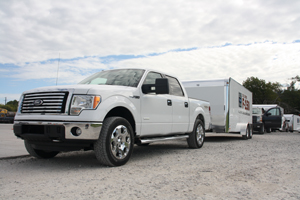
President Obama's proposal to boost automakers' Corporate Average Fuel Economy to 54.5 miles per gallon by 2025 will take a significant bite out of fuel-tax receipts flowing into the Highway Trust Fund, say road builders, who are pushing for a funding revamp.
The most recent CAFE standard, proposed July 29 for all light-duty vehicles, would cut $65 billion out of federal funding for state and local highway, bridge and public-transit projects, according a recent estimate from the American Road and Transportation Builders Association. Current and future fuel-economy standards combined would equate to a $75 billion loss in funding through 2025.
"Like everyone else, we are supportive of efforts to reduce carbon emissions and improve fuel economy," says Pete Ruane, ARTBA president. "However, from a public policy perspective, this is a classic case of the left hand not knowing what the right hand is doing."
Under the traditional, fuel-tax model, increased fuel efficiency creates a paradox for road infrastructure in the U.S.: Fuel taxes paid at the pump support future road construction. Yet as cars and trucks become more efficient, drivers pay less and less for the wear and tear they impose on the highways if taxes do not rise in kind.
As Congress debates a multi-year funding bill for road construction, industry groups are calling for new sources of funding, such as higher fuel taxes and user fees, to offset the declines in the Highway Trust Fund (HTF).
"There are long-term implications on the Highway Trust Fund," says Jeffrey Shoaf, government affairs director at Associated General Contractors of America. "That is just one more reason we need to significantly increase the gas tax, change the way of funding that program or at least supplement the current Highway Trust Fund mechanism."
On July 27, the Association of Equipment Manufacturers, another industry trade group, proposed a dual payment system for consumer and commercial motorists using Interstate highways. Regular drivers would be billed automatically based on mileage logged into a tollway-type transponder; commercial carriers would operate on a GPS-style tracker.


Post a comment to this article
Report Abusive Comment